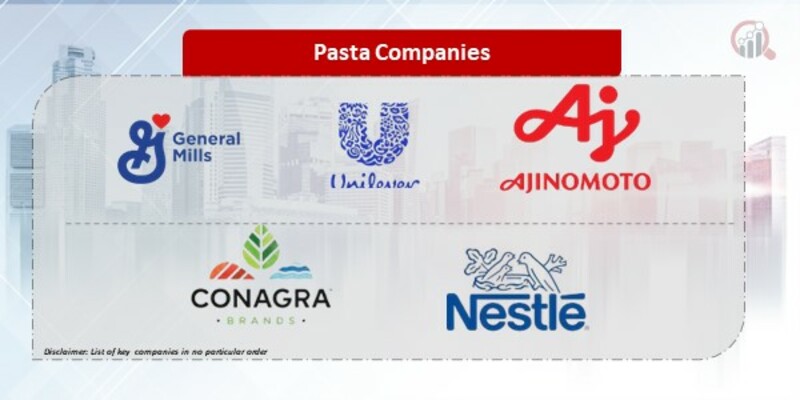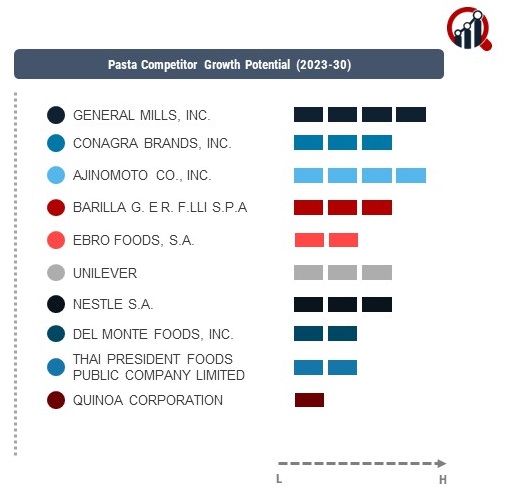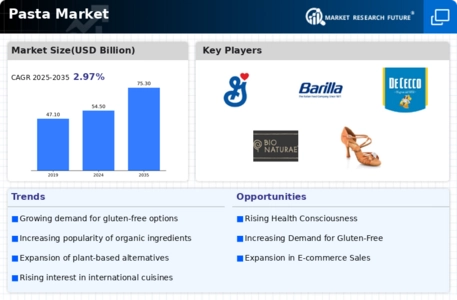Top Industry Leaders in the Pasta Market

Competitive Landscape of the Pasta Market: Key Players, Strategies, and Market Dynamics
The pasta market has been a staple in the food industry, catering to consumers worldwide with its diverse range of products. Key players in this sector are strategically navigating market dynamics to maintain their competitive edge and adapt to evolving consumer preferences. This analysis provides insights into the key players, strategies adopted, factors influencing market share, emerging companies, industry trends, overall competitive scenario, and a recent development in 2023.
Key Players:
General Mills Inc
Unilever
Nestle S.A.
Del Monte Foods Inc
Ebro Foods S.A.
Ajinomoto Co. Inc
Conagra Brands Inc
Thai President Foods Ltd
Quinoa Corporation
Strategies Adopted:
Market Share Analysis:
New & Emerging Companies:
Industry Trends:
Recent industry developments highlight a growing trend towards plant-based and gluten-free pasta options. Major players are investing in research and development to introduce pasta products that cater to dietary preferences, including gluten-free, low-carb, and high-protein alternatives.
In terms of investment trends, companies are exploring automation and technology to enhance manufacturing efficiency. Investments in smart manufacturing technologies, data analytics, and robotics contribute to improving production processes and reducing operational costs.
Competitive Scenario:
The competitive landscape of the pasta market is characterized by established brands adapting to changing consumer preferences and emerging companies introducing innovative and alternative pasta options. The focus on product innovation, sustainability, and effective marketing remains central to the overall competitive scenario.
Recent Development
The pasta market was the increased focus on personalized pasta solutions. Major players introduced initiatives to offer customizable pasta products, allowing consumers to choose ingredients, shapes, and flavors according to their preferences. This development aligns with the broader trend towards personalization in the food industry, recognizing the diverse and individualized tastes of consumers. Companies invested in technology and online platforms to facilitate the customization process, providing consumers with a unique and tailored pasta experience. This shift towards personalized pasta options reflects the industry's responsiveness to evolving consumer demands and the desire for more personalized and engaging food experiences.










